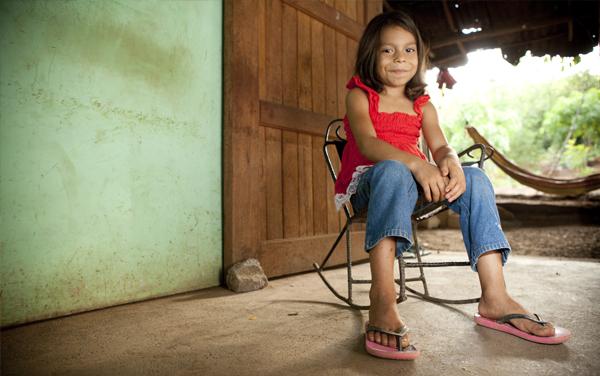Habitat houses provide healthy foundations
When Lisseth Mairena was pregnant with her son Gabriel, she was deeply concerned about having a newborn in her home, which had been constructed out of scraps of rusty zinc, plastic and wood.
Not at all healthy or secure, her home’s dirt floor contributed to the near-constant sickness that Lisseth, her husband Rafael and their daughter Griselda all experienced. The floor was always damp, a situation only exacerbated by a leaking roof.
By the time Gabriel was born, however, the Mairena family’s new home was under construction. The family had partnered with Habitat Nicaragua to build a new brick home with a concrete floor in their community of La Gallina.
The Mairenas’ home is one of 290 built or improved with a concrete floor through Habitat Nicaragua’s Un Piso para Jugar campaign — “A Floor to Play On.” For many children, dirt floors translate into diarrhea, skin and respiratory diseases — health issues that can be easily avoided by the simple installation of concrete.
These issues can be magnified for younger children. Today, thousands of Nicaraguan toddlers living in poverty are missing a formative development phase, as mothers — rightly fearing potential illnesses — prevent their youngsters from crawling on dirt floors. New concrete flooring means freedom, a safe place for children to play and for families to gather.
The entire Mairena family is much healthier now and quite proud of their new home. Now, 5-year-old Griselda and 3-year-old Gabriel are free to sit, play and otherwise be healthy children on the floor of their own home.
“I feel very relieved that my baby is going to grow up in a real house. He is not going to get sick,” Lisseth says. “We feel safe, secure, happy and grateful. Now, we know for a fact that our home is stable and that this marked a new beginning for each member of our family.”

Great need for solid footing
Families with fewer financial resources are most likely to experience unhealthy and unsafe housing conditions and typically are least able to remedy them, contributing to disparities in health across socioeconomic groups in this country. — Robert Wood Johnson Foundation
Laying foundations
Last fiscal year, Habitat for Humanity poured more than 350,000 cubic yards of concrete — enough to lay a sidewalk from Atlanta to Los Angeles.
Better housing, better childhood development
“We found that the quality of housing — whether a children’s home has structural or maintenance deficiencies such as infestations of rodents or cockroaches, exposed wiring and peeling paint, or a lack of light, heat, or hot water — was the most important aspect of housing for children and families.” — Boston College’s Rebekah Levine Coley and Tufts University’s Tama Leventhal
Subscribe to our monthly newsletter
Get the latest Habitat news, volunteer opportunities, DIY tips and more ways to get involved.